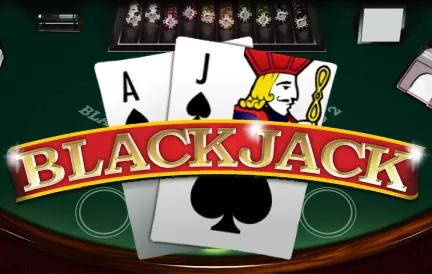How to Play French Roulette
May 26th, 2025
24029
Do you wanna try roulette but hate how the American version feels like the house’s personal ATM? French roulette online might just be your new best friend. It’s been around forever and actually gives you a better shot at winning, thanks to some clever little rules they added in. Yes, the table’s got some French words that can look confusing, but don’t overthink it. Once you’ve played a few spins, it’s pretty easy and way more chill than jumping straight into a Vegas-style game.
And there’s no better way to learn your way into winning the game than reading this article! We’ll explain all types of bets, rules, payouts, how to play French roulette classic, and give you a few useful strategies so you can jump in feeling successful instead of lost. Read on!
What Is French Roulette?
French roulette is the original blueprint for how roulette was meant to be played. The wheel can be considered conservative as it only has one zero (same as European Roulette), which already gives you better odds than the American version with two zeros. But what really makes it stand out are these two rules: La Partage and En Prison.
Don’t let the French names throw you, they’re actually pretty great. Basically, if you make an even-money bet (like red/black or odd/even) and the ball lands on zero, you don’t automatically lose. With La Partage, you get half your bet back. With En Prison, your bet stays on the table for the next spin – kind of like a second chance. Either way, it means you’re not totally screwed when that zero shows up, which is rare in most versions of roulette.
| Game Title | Provider |
| French Roulette | BGaming |
How It Differs from European and American Roulette
French roulette and European roulette look almost identical at first. Same wheel, one zero, same basic layout. But French roulette has a little edge (literally) because of those extra rules (La Partage and En Prison). They give you better chances, especially if you like playing even-money bets. With those French roulette rules in play, the house edge drops to 1.35%, which is a mathematical way to say it’s better than the usual 2.7% in European games.
American roulette is a whole other story. It’s got both a 0 and a 00, and that double zero jacks up the house edge to over 5%. You might not notice it right away, but over time, that extra zero eats into your bankroll a lot faster. Also, French roulette has the table written in, well, French, so instead of "Even," you’ll see Pair, or Manque instead of "1 to 18." It might look a little confusing at first, but once you know what’s what, it’s the same game, just with a French accent.
Expert Tip: French roulette uses a single-zero wheel with 37 pockets.
French RouletteTable Layout
Are there a few different versions of the French roulette table layout? Yes. Yes, there are. But all’s good – we’ll explain all you have to know right here:
Standard Wheel (Single Zero)
First thing you’ll notice: there’s only one zero on the French roulette wheel. And yeah, that’s a win already. If you’ve played American roulette before, you know that the extra double zero just exists to ruin your day. French roulette ditches it, which means slightly better odds for you – nothing massive, but enough to feel the difference when you play for a while.
It still has 1 to 36 red and black, with the lone green zero sitting there like a little landmine. But if it lands on that zero and you were playing an even-money bet (like red or black), you might not lose everything, thanks to the French rules. The wheel’s simple, but it’s low-key doing you a favor compared to the American one.
Betting Grid and French Terminology
The table layout looks pretty familiar... until you realize half the words sound like they came off a Paris café menu. But don’t let it mess with your head! It’s basically the same thing you’re used to. You’ve got your inside bets (like straight-up numbers and splits) and your outside bets (red/black, odd/even, etc.). Same game.
What’s different? Just the labels. “Even” is Pair, “Odd” is Impair. Manque means low numbers (1–18), Passe is high (19–36). That’s it. You’ll spot them fast. After a couple of rounds, it doesn’t even feel weird. It’s still the same game, just with better odds and a slight French attitude.
Racetrack Bets and Special Sectors (Voisins, Orphelins, Tiers)
If you’re playing at a proper French roulette table (especially online), you’ll see this oval-shaped racetrack near the main grid. That’s where you place what they call “call bets” or “announced bets.” Basically, you’re betting on certain zones of the actual wheel instead of random numbers on the table.
- Voisins du Zéro: Means “neighbors of zero.” This covers the area around the zero. A lot of players swear by it.
- Tiers du Cylindre: Covers a chunk from the zero on the opposite side of the wheel. It’s got a good spread if you’re feeling like covering more ground.
- Orphelins: The "orphans," aka the leftover numbers that aren’t in either of the other two groups. They’re kind of random, but sometimes they hit hard.
Rules of French Roulette
To be honest, there’s not much when it comes to rules. Don’t believe us? Check out the list below to make sure of it:
Basic Rules of Gameplay
French roulette is still that same satisfying mix of “pick a number, hope for the best,” just with a bit more of a chill vibe (and slightly better odds, which never hurts):
- You pick your bet – maybe you’ve got a lucky number, or maybe you’re playing it safe with red or black. Either way, drop your chips before the spin.
- The dealer gives the wheel a spin, the ball does its little dance, and for a few seconds, you’re just staring like your rent money’s riding on it.
- The ball drops into a slot, and you either cheer, groan, or pretend not to care.
The main thing to remember is that this version plays on a single-zero wheel, which already gives you slightly better odds than American roulette. So just by picking French over the others, you’re already doing yourself a favor.
Smart Tip: Special rules like La Partage and En Prison can cut the house edge on even-money bets to 1.35%.
Special Rules: La Partage and En Prison
French roulette gives you a little backup plan – two rules that help soften the blow when the ball lands on that stupid green 0 and you’re not betting on it:
La Partage:
- If you bet on something like red or even, and the ball hits 0, normally, that’s a loss.
- The French roulette casino only takes half your bet, and you get the other half back.
- It’s not a win, but it’s better than watching your whole stack disappear.
En Prison:
- Your bet doesn’t get taken, it just gets “locked up” for the next spin.
- On that next spin, if your original bet wins, you get your stake back (no profit, but you’re back in the game). If it loses again, well... now it’s really gone.
It’s basically roulette’s version of “double or nothing,” but without the risk of doubling your losses. Not every table has both rules (some use one or the other), but either way, they seriously take the sting out of those zero hits. Plus, these rules drop the house edge on even-money bets to like 1.35%, which is way better than what you’ll get on most other casino games.
How They Reduce the House Edge
One of the biggest perks of French roulette compared to other roulette versions is its lower house edge, meaning players have better chances to win over time. This reduction comes mainly from special rules that favor the player when certain outcomes happen:
- La Partage rule: This rule essentially cuts the casino’s edge on these bets in half, dropping the house advantage from about 2.7% down to around 1.35%.
- En Prison rule: Similar to La Partage, the En Prison rule “imprisons” your even-money bet if the ball lands on zero. This gives you a second chance to win and reduces the house edge just like La Partage.
When These Rules Apply (Even-Money Bets)
There’s not much point to these rules unless you know how to apply them. So, we give you all you need to know below.
Payouts for Each Bet Type
Before diving into the bets themselves, it helps to know how much you can win. Different bets pay out different amounts – the riskier the bet, the bigger the payout if you hit it:
- Straight-up (one number): Pays 35 to 1, which is the jackpot territory if you get lucky.
- Split (two numbers): Pays 17 to 1.
- Street (three numbers): Pays 11 to 1.
- Corner (four numbers): Pays 8 to 1.
- Six line (six numbers): Pays 5 to 1.
- Outside bets (like red/black or odd/even): Pay 1 to 1, even money.
Now, remember that we do apply La Partage and En Prison rules. So, unfortunately, for inside bets like straight-up (35:1), splits (17:1), streets (11:1), corners (8:1), and six lines (5:1), La Partage and En Prison don’t apply at all. If the ball lands on zero, those bets are just lost, and there are no second chances.
For outside bets (red/black, odd/even, low/high) that pay even money (1:1), these rules kick in if zero hits.
Types of Bets in French Roulette
French roulette has all the usual suspects when it comes to bets, but with a few extras thrown in if you want to get fancy. They’re basically split into three groups:
- Inside bets: Betting on specific numbers or small groups of numbers right on the grid.
- Outside bets: Betting on bigger groups like red/black, odds/evens, or dozens.
- Announced bets (or call bets): Special wagers placed on specific sections of the wheel, usually made by announcing the bet to the dealer. And these also have no protection from En Prison and La Partage rules if zero hits.
Inside Bets (Plein, Cheval, Transversale, etc.)
Inside bets are your classic “pick some numbers” moves:
- Plein: A straight-up bet on a single number.
- Cheval: A split bet covering two adjacent numbers.
- Transversale Pleine: A street bet covering three numbers in a row.
- Carré: A corner bet covering four numbers that meet at one corner.
- Sixain: A six-line bet covering two adjacent rows (six numbers).
Outside Bets (Rouge/Noir, Pair/Impair, Manque/Passe)
Outside bets are the safest bets – you’re covering big chunks of numbers, so the payouts are smaller but more frequent:
- Rouge/Noir: Betting on red or black.
- Pair/Impair: Betting on even or odd numbers.
- Manque/Passe: Betting on low (1–18) or high (19–36) numbers.
If you bet on single numbers or combos (plein, cheval, transversale, carré, sixain), zero kills your bet immediately — no half-loss or second spin freebies.
Announced Bets and Call Bets
This is the coolest part of French roulette – the announced or “call” bets. Instead of placing chips on individual numbers, you’re betting on specific sections of the wheel:
- Voisins du Zéro (“neighbors of zero”): Covers a big chunk of numbers surrounding zero.
- Tiers du Cylindre (“third of the wheel”): Covers the third opposite the zero.
- Orphelins (“orphans”): The numbers left over that aren’t in the other two groups.
- Jeu Zéro (“zero game”): A smaller bet focusing just on numbers close to zero.
Here, if the ball lands zero, instead of losing it all, you get half your money back (La Partage) or get a second chance on the next spin (En Prison).
French Roulette Odds and House Edge
How fair is the French roulette? What are the French roulette odds? Read on and find out!
Odds for All Bet Types
In French roulette, each bet type carries different chances of winning based on how many numbers it covers:
- Straight-up bet (single number): Hits 1 number out of 37, so odds are 1 in 37 (about 2.7%).
- Split bet (two numbers): Covers 2 numbers, so 2 in 37 chance (about 5.4%).
- Street bet (three numbers): 3 in 37 chance (around 8.1%).
- Corner bet (four numbers): 4 in 37 (10.8%).
- Six-line bet (six numbers): 6 in 37 (16.2%).
- Outside bets (red/black, odd/even, 1-18/19-36): Each covers 18 numbers, so about 48.6%.
How the House Edge Drops to 1.35%
Normally, roulette has a house edge of 2.7% because of the single zero. But with La Partage, if you make an even-money bet (like Red/Black) and the ball lands on zero, you get half your bet back instead of losing it all.
La Partage cuts the house edge in half (from 2.7% down to 1.35%), making French roulette one of the fairest roulette variants for players.
Best Value Bets in French Roulette
If you want the best bang for your buck, focus on these even-money bets: red or black, odd or even, and low (1–18) or high (19–36). Not only are they almost 50/50 shots, but they’re also protected by those special French rules.
Inside bets like single numbers pay more but come with bigger risk and no extra protection from zero. So if you want to keep your money rolling a little longer and avoid those killer zero hits, outside bets are where the smart money goes.
Strategies for French Roulette
Now, how should you go about playing the game for the first (and most of the latter) time? We offer a few strategies to make your life a bit easier:
Using La Partage to Your Advantage
La Partage is a little safety net the online casino gives you on even-money bets. When zero pops up, instead of losing your whole bet, you only lose half, which is way better than the usual roulette sting. To make the most of this:
- Stick mostly to even-money bets like red/black, odd/even, or low/high.
- Think of La Partage as your way to cut losses during unlucky spins.
- Play French roulette online with a cool head, knowing zero won’t totally wreck your bankroll on these bets.
Top Tip: The table layout includes unique French terms such as Manque (low) and Passe (high).
Flat Betting vs. Progressive Strategies
When it comes to how much you bet, there are two main styles:
- Flat betting: You bet the same amount every spin. It’s chill, low-stress, and helps you control your money better. Perfect if you want to just enjoy the game and avoid big swings.
- Progressive French roulette strategy: You change your bet size depending on wins or losses, like doubling your bet after a loss (Martingale) or increasing it after a win. These can lead to bigger payouts but come with the highest risk and can drain your bankroll fast.
Combining Inside and Outside Bets Wisely
French roulette gives you lots of options, but mixing inside and outside bets carefully can balance risk and reward:
- Use outside bets for steady play and to benefit from La Partage or En Prison rules.
- Sprinkle in some inside bets if you’re feeling lucky, but keep those smaller since they don’t get the zero protection.
- Try covering a few numbers with announced bets (like Voisins du Zéro) while also placing a solid outside bet. It’s a way to chase bigger wins without going all-in on risky bets.
Tips for Playing French Roulette
If you’re jumping into French roulette for the first time, do yourself a favor and set a budget before you start. Seriously, it’s easy to get caught up in the flow of the game, especially with the fancy layout and smoother pace. Don’t fall into the trap of upping your bets just because you had a couple of wins, or trying to win it all back after a bad streak. Break your bankroll into smaller chunks and pace yourself. It’s way more fun when you’re not stressing about running out of chips too early.
Also, take a minute to just watch the game before you throw your chips down. No, it’s not going to magically help you predict the outcome, but it’s an optimal way to ease you into the rhythm of things.
Besides, there are a few more tips that can be useful for you:
| Tip | Why It Is Useful |
| Learn the French terms for betting | Stops you from freezing up and lets you bet quicker |
| Stick to even-money bets for safer play | Gives you that extra cushion with La Partage and En Prison |
| Practice with free versions before playing for real money | Avoids dumb mistakes and boosts your confidence |
Common Mistakes to Avoid
One mistake that gets people every time is chasing losses like the table owes them something. You lose a few spins (say you were on red and it lands black three times in a row), so you start doubling your bets, thinking, “It’s gotta hit red next.” But it doesn’t. And now, instead of being down $20, you’re suddenly down $100 and sweating. Online French roulette isn’t predictable like that, so go in with a budget (say $50 or $100) and treat it like entertainment, not a recovery mission.
Another thing that trips people up is diving in too fast without watching the table. A buddy of mine sat down once, slapped chips on random numbers, and didn’t even realize he was missing out on better bets just because he didn’t notice how the dealer was spinning or how the ball kept landing around the same section. Take a few minutes. Watch a few spins. Get a feel for how fast things move, where the action’s going, and how others are betting.
And another set of common mistakes includes:
| Mistake | Why It Is Bad |
| Confusing French layout with European or American tables | Leads to misplacing bets and misunderstanding terminology |
| Ignoring the En Prison rule when it’s available | Misses out on a key house-edge-reducing rule that can save even-money bets |
| Betting without understanding the odds | Increases risk and leads to poor bankroll management |
Frequently Asked Questions About French Roulette
What does “La Partage” mean in French Roulette?
La Partage is a safety net for even-money bets (like red/black or odd/even). If the ball lands on zero, instead of losing your whole bet, you get half your money back. It’s a way the French roulette game softens the blow so you don’t get totally wiped out when zero shows up.
Is French Roulette better than European Roulette?
Yeah, kinda! They both have just one zero on the wheel, but French roulette adds those cool rules like La Partage and En Prison. These rules give you a better shot at keeping your cash when zero hits, dropping the house edge from 2.7% in European roulette down to about 1.35%.
Is the game available in live dealer format online?
For sure! Lots of online casinos offer French roulette with live dealers. You get that real casino vibe from your screen, plus the French rules and fancy racetrack bets if you want them.
Can beginners play French Roulette easily?
Absolutely. The French words might look tricky at first (“Pair” instead of “Even,” “Manque” for low numbers), but once you see them a couple of times, it clicks. The gameplay itself is super straightforward: pick your bet, spin the wheel, and hope for the best. Plus, the special rules give beginners a nice cushion against losing it all on zero, which is great if you’re still figuring things out. Just watch a few rounds before jumping in, and you’ll be good.
Related posts











